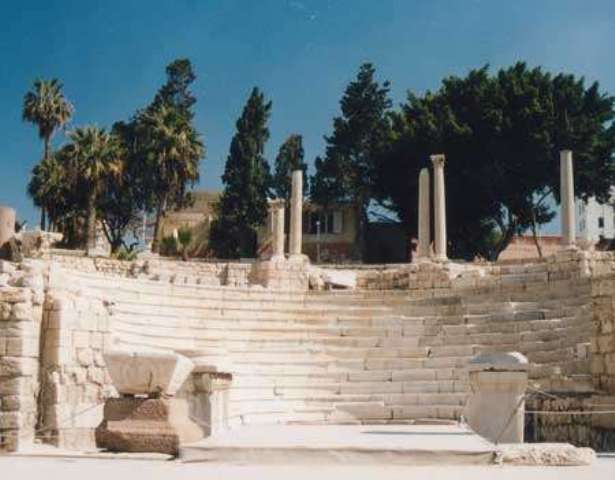Greco-Roman Museum Alexandria: Preserving Egypt’s Hellenistic Heritage
Visitor Information
Google Rating: 4.6
Popularity: Medium
Google Maps: View on Google Maps
Official Website: www.alexandria.gov.eg
Country: Egypt
Civilization: Egyptian, Roman
Remains: Museum
History
The Greco-Roman Museum is located in Alexandria, within the Alexandria Governorate of Egypt. Alexandria was founded by Alexander the Great in 331 BCE and became a prominent center of Hellenistic culture, blending Greek and Egyptian traditions.
Initially, the museum occupied a small five-room apartment on Rosetta Street, a location that was later renamed Avenue Canope and is now known as Horriya. In 1895, the museum moved to a larger neoclassical building near what is today Gamal Abdul Nasser Street. This relocation was marked by an official inauguration led by Khedive Abbas II Hilmi, reflecting the growing importance of preserving Alexandria’s Greco-Roman heritage.
The museum was founded and first directed by the Italian archaeologist Giuseppe Botti. He was succeeded by Evaristo Breccia, who led the institution from 1904 to 1931, and later by Achille Adriani, who served two terms between 1932–1940 and 1948–1952. Throughout these years, the museum became a key institution for collecting and exhibiting artifacts from the Greco-Roman period in Egypt.
Its collections grew through private donations, notably from John Antoniadis, and through archaeological excavations in Alexandria and nearby regions such as Fayoum and Benhasa. The museum also received artifacts from the Egyptian Organization of Antiquities based in Cairo. These efforts helped preserve a wide range of objects that illustrate the cultural fusion of Greek and Roman influences with ancient Egyptian traditions.
In 2005, the museum closed for extensive renovations. Work was interrupted during the 2011 Egyptian revolution but resumed in 2018. Although reopening was planned for 2020–2021, delays pushed the official reopening to 11 October 2023. The event was attended by Egyptian Prime Minister Mostafa Madbouly, marking the completion of an 18-year restoration project.
Throughout its history, the museum has also contributed to archaeological scholarship by publishing research in the Bulletin of the Alexandria Archaeological Society. It remains a major center for the study and preservation of Greco-Roman archaeological heritage in Egypt.
Remains
The Greco-Roman Museum is housed in a neoclassical building organized around a landscaped central courtyard. This courtyard is surrounded by a columned corridor, creating an open-air space for displaying large monumental artifacts. The building’s facade features six columns and a pediment inscribed in Ancient Greek with the word MOYΣEION (MOUSEION), meaning “place of the Muses.”
Inside, the museum contains approximately 25 to 27 exhibition halls. These have expanded from the original eleven rooms located in the western wing to the current layout near Gamal Abdul Nasser Road. The halls display a diverse collection of artifacts from the Greco-Roman period in Egypt.
Among the notable pieces are large granite statues, including a black granite Apis bull dating to the reign of Emperor Hadrian. Marble sculptures include a colossal statue of Marcus Aurelius and a marble head of Alexander the Great. The museum also holds intricate mosaics, such as a Medusa mosaic and fine Alexandrian pebble mosaics, which showcase the artistic skills of the period.
Other important objects include sarcophagi, textiles, jewelry, coins, and funerary items. The collection features two headless sphinxes from Egypt’s 12th Dynasty, basalt statues of the goddess Isis, and a red granite head of Ptolemy IV wearing the double crown, symbolizing his rule over Upper and Lower Egypt. A funerary amphora from Chatby, dating to the late 4th century BCE, is also part of the holdings.
The museum garden contains numerous statues and artifacts, enhancing the outdoor exhibition area. Many objects reflect a blend of Egyptian and Greco-Roman artistic traditions, illustrating the cultural interactions that shaped Alexandria’s history.









